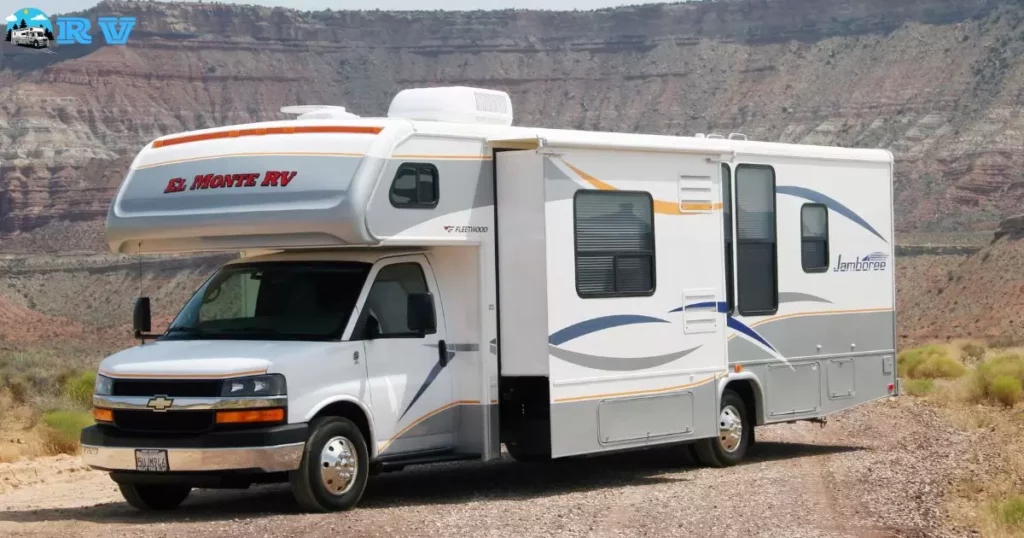Are you tired of looking through dirty and grimy RV window screens? In this informative article, we will guide you through the process of removing and cleaning your RV window screens to restore clarity and improve your overall experience. With our step-by-step instructions and helpful tips, you’ll be able to effortlessly remove and clean your window screens, ensuring they are in optimal condition. Say goodbye to dirt and hello to a crystal-clear view with our expert advice.
Key Takeaways
- Locate the tabs or latches on both sides of the screen
- Gently lift or push the tabs to release the screen from its frame
- Carefully pull the screen towards you to remove it
- Place the screen on a flat surface
Horizontal Sliding Windows
The removal of RV window screens for cleaning, such as addressing the common issue of ‘My RV Propane Alarm From Beeping,’ is a straightforward process, especially for horizontal sliding windows. To begin, locate the tabs or latches on both sides of the screen. Gently lift or push these tabs to release the screen from its frame. It’s important to be cautious and avoid applying excessive force, as this may lead to damage to either the screen or the window frame.
Once the tabs are released, carefully pull the screen towards you, ensuring it comes out smoothly. Place the screen on a flat surface and use a soft brush or cloth to remove any dust or debris. If necessary, you can also use mild soap and water to clean the screen thoroughly. Once cleaned, reinsert the screen into the window frame by aligning the tabs and gently pushing it back in place.
Thorough Cleaning of RV Window Screens
How can you thoroughly clean RV window screens? Proper maintenance and cleaning of window screens are essential to ensure their longevity and optimal performance. Here are some steps to help you achieve a thorough cleaning:
- Remove the screens: Carefully remove the window screens from their frames by following the instructions provided in the previous section.
- Prepare a cleaning solution: In a bucket, mix warm water with a mild detergent or dish soap. This solution will effectively remove dirt, grime, and stains from the screens.
- Clean the screens: Dip a soft brush or sponge into the cleaning solution and gently scrub both sides of the screen. Pay special attention to the corners and edges where dirt tends to accumulate.
- Rinse and dry: Use a hose or a spray bottle to rinse off the cleaning solution thoroughly. Allow the screens to air dry before reinstalling them.
Tips for Caring for Your Window Screens
Proper maintenance is crucial for ensuring the longevity and optimal performance of your RV window screens. By taking care of your window screens, you can prevent damage and extend their lifespan. One important tip is to regularly clean your screens to remove dust, dirt, and debris that can accumulate over time. Use a soft brush or vacuum to gently remove any loose particles.
Avoid using harsh chemicals or abrasive materials that may damage the screens. Additionally, inspect your screens regularly for any signs of wear and tear, such as holes or tears. If you notice any damage, it is important to repair or replace the screens promptly to prevent further issues. By following these tips, you can maintain your RV window screens and ensure they continue to provide you with the protection and comfort you desire.
Checking for Rips and Tears
Regularly inspecting your RV window screens for rips and tears is essential to maintaining their integrity and functionality. Here are three key things to check for when examining your window screens for any damage:
- Visible tears: Look closely at each screen to identify any visible tears or holes. These can be caused by various factors such as sharp objects or wear and tear. It’s important to address them promptly to prevent further damage and maintain the effectiveness of the screen.
- Loose threads: Pay attention to any loose threads along the edges of the screen. These can indicate weak areas that may lead to tears or unraveling if left unattended. Trim any loose threads and reinforce the edges if necessary.
- Frayed edges: Inspect the edges of the screen for fraying or unraveling. Frayed edges can compromise the overall strength and durability of the screen. If you notice any frayed areas, consider repairing or replacing the screen to ensure optimal performance.
Dusting With a Microfiber Towel
Regular maintenance of your RV window screens includes removing dust with a microfiber towel. Dust can accumulate on the screens, making them look dirty and affecting the quality of air inside your RV. Using a microfiber towel is an effective and efficient way to remove dust without scratching or damaging the screens. The soft and fine fibers of the towel attract and trap dust particles, leaving your screens clean and clear.
To create a sense of belonging and evoke an emotional response, let’s take a look at the benefits of using a microfiber towel for dusting your RV window screens:
| Benefits of Using a Microfiber Towel for Dusting RV Window Screens |
|---|
| 1. Gentle and non-abrasive cleaning |
| 2. Effectively captures and traps dust particles |
| 3. Leaves screens clean and streak-free |
When to Replace Your Window Screens
Determining the ideal time for replacing your RV window screens is essential for maintaining the functionality and appearance of your vehicle. Here are three signs that indicate it’s time to replace your window screens:
- Visible Damage: If you notice any visible damage such as tears, holes, or bent frames, it’s a clear indication that your window screens need replacement. These damages can compromise the effectiveness of the screens in keeping out bugs and debris.
- Poor Fit: Over time, window screens can become loose or misshapen, resulting in gaps that allow insects and other unwanted elements to enter your RV. If you find that your window screens no longer fit snugly, it’s time to consider replacing them.
- Fading or Discoloration: Exposure to sunlight can cause window screens to fade or change color. Not only does this affect the aesthetic appeal of your RV, but it may also indicate that the screens are becoming weak and brittle. Replacing them will not only enhance the look of your vehicle but also ensure better protection and durability.
Replacing Your Window Screens
To maintain the functionality and appearance of your RV, it is important to replace your window screens when necessary. Over time, window screens can become worn, torn, or damaged, compromising their ability to keep bugs and debris out of your RV while allowing fresh air to flow in. Replacing your window screens is a simple task that can greatly improve the comfort and enjoyment of your RV experience.
Begin by measuring the dimensions of your existing window screens to ensure you purchase the correct replacements. Then, remove the old screens by gently prying them out of the window frames. Finally, install the new screens by fitting them securely into the frames and securing them with the appropriate fasteners. By regularly replacing your window screens, you can maintain a clean and inviting environment inside your RV.
Tools Needed for Screen Replacement

When replacing your window screens, it is important to have the necessary tools for the job. Here are three essential tools that will help you successfully replace your RV window screens:
- Screwdriver: A screwdriver is crucial for removing the screws that hold the window screen in place. Make sure to choose the right size and type of screwdriver for your specific window screen.
- Screen rolling tool: This tool is designed to help you secure the new screen into the frame. Its smooth surface allows for easy rolling and ensures a tight fit, preventing any gaps or sagging.
- Utility knife: A utility knife is handy for trimming the excess screen material after installation. It allows for precise cuts and ensures a neat and professional-looking finish.
Protecting Window Screens From Pets
One effective method for safeguarding window screens from pets is through the use of protective barriers. Pets, especially cats and dogs, can easily damage window screens by scratching or jumping on them. To prevent this, homeowners can install protective barriers, such as pet screens or grilles, that are specifically designed to withstand the impact and scratching of pets. These barriers are made of durable materials and are typically attached to the existing window screens with secure fasteners.
Not only do these protective barriers keep pets from damaging the screens, but they also provide an added layer of security by preventing pets from escaping through open windows. By using protective barriers, homeowners can ensure the longevity and functionality of their window screens while keeping their beloved pets safe and secure inside their homes.
Frequently Asked Questions
How Do I Remove the Window Screens on My RV if They Are Stuck or Difficult to Move?
If the window screens on your RV are stuck or difficult to move, it is important to approach the situation with caution and patience. Here are some steps to consider when removing stuck or stubborn window screens.
Can I Use Regular Household Cleaning Products to Clean My RV Window Screens?
Regular household cleaning products may not be suitable for cleaning RV window screens. It is important to use products specifically designed for this purpose to ensure proper cleaning and avoid potential damage to the screens.
Are There Any Specific Maintenance Tasks I Need to Perform Regularly to Keep My RV Window Screens in Good Condition?
Regular maintenance tasks are essential for keeping RV window screens in good condition. This includes regular cleaning to remove debris and dust, inspecting for damage or wear, and ensuring proper installation to prevent any gaps or leaks.
How Often Should I Check My RV Window Screens for Rips and Tears?
Regular inspection of RV window screens is crucial to ensure they remain free from rips and tears. By conducting routine checks, owners can promptly address any damages and prevent further issues, maintaining the integrity of the screens.
What Should I Do if I Accidentally Damage My RV Window Screens While Cleaning Them?
If you accidentally damage your RV window screens while cleaning them, it is important to take immediate action to prevent further damage. Assess the extent of the damage and consider contacting a professional for repair or replacement.
Conclusion
In conclusion, removing and cleaning RV window screens may seem like a tedious task, but it is necessary to maintain a clean and functional living space. By regularly checking for rips and tears, dusting with a microfiber towel, and knowing when to replace your screens, you can ensure the longevity of your window screens. So, embrace the irony of spending time on this seemingly mundane chore, and enjoy the satisfaction of a sparkling clean living space.











